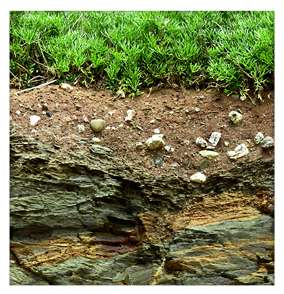New data suggest bacteria have a direct effect on rock weathering

New research shows that in a bid to derive energy from iron, bacteria may be directly responsible for kicking off a cascade of reactions that reduce rocks to soil and free biologically important minerals.
These findings from a team of EMSL staff and users are based on a model microbial community called the Straub culture. The Straub culture is lithotrophic, or literally an "eater of rock," meaning that it can turn non-carbon sources, such as iron, into energy. This energy is produced via a biochemical pathway driven by a series of electron exchanges, which in the case of the Straub culture is initiated by taking an electron from, or oxidizing, iron.
To gain insight into how lithotrophs behave in the environment, the research team incubated the Straub culture with media containing fine particles of an iron-rich mica called biotite. After two weeks, Mössbauer spectroscopy at EMSL was used to compare a biotite control to biotite incubated with the Straub culture. Mössbauer spectroscopy is used to quantify how much iron exists in what oxidation states in a sample.
In the biotite, Mössbauer confirmed that the microbes did oxidize iron from Fe(II) to Fe(III). Moreover, transmission electron microscopy revealed that this oxidation affected the biotite structure, leading to changes that resemble those observed in nature. This work offers new insight into the roles of microbes in soil production and in the biogeochemical cycling of minerals and suggests that microbes have a direct effect on rock weathering—that bacteria oxidize iron, leading to mineral transformations then rock decomposition.
More information: Shelobolina ES, H Xu, H Konishi, RK Kukkadapu, T Wu, M Blothe, and EE Roden. 2012. "Microbial Lithotrophic Oxidation of Structural Fe(II) in Biotite." Applied and Environmental Microbiology 78(16):5746–5752.
Journal information: Applied and Environmental Microbiology
Provided by Environmental Molecular Sciences Laboratory



















